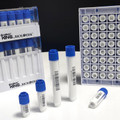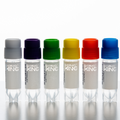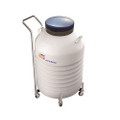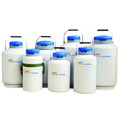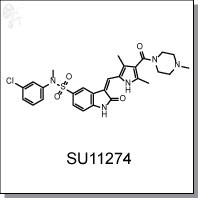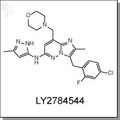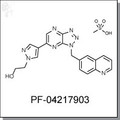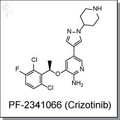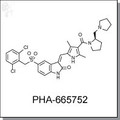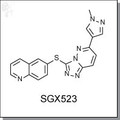 Loading... Please wait...
Loading... Please wait...- Home
- Molecular Target
- Tyrosine Kinase
- MET/RYK
- SU11274 | cMET inhibitor
Product Description
SU-11274 is an oxindole-based, ATP-competitive, Met inhibitor with activity of 20 nM and is >500-fold selective against a variety of other kinases such as PDGFR, EGFR, cdk2, src, and FGFR. [1] SU11274 induces G1 cell cycle arrest and apoptosis with increased caspase 3 activity. Reduction of phosphorylation in the PI3K and Ras pathway components, such as Akt, GSK-3, and FKHR. [1] SU11274 inhibits cell viability, c-Met/HGF and downstream cell proliferation in c-Met-expressing NSCLC cells. [2]
More recently, SU11274 has been extensively studied for the treatment of hepatocellular carcinoma (HCC). In particular, cells postiive for des-gamma-carboxyprothrombin (DCP), an agent that interacts with c-Met to activate HCC cell growth, were inhibited by SU11274. [3]
Technical information:
| Chemical Formula: | C28H30CIN5O4S | |
| CAS #: | 658084-23-2 | |
| Molecular Weight: | 568.09 | |
| Purity: | >98% | |
| Appearance: | Yellow | |
| Chemical Name: | (Z)-N-(3-chlorophenyl)-3-((3,5-dimethyl-4-(1-methylpiperazine-4-carbonyl)-1H-pyrrol-2-yl)methylene)-N-methyl-2-oxoindoline-5-sulfonamide | |
| Solubility: | Up to 100 mM in DMSO | |
| Synonyms: | SU11274, SU-11274 |
Shipping Condition: The product is shipped in a glass vial at ambient temperature.
Storage condition: For longer shelf life, store solid powder at 4oC desiccated, or store DMSO solution at -20oC.
Reference:
| 1. | Sattler et al., A novel small molecule met inhibitor induces apoptosis in cells transformed by the oncogenic TPR-MET tyrosine kinase. Cancer Res. 2003, 63, 5462-5469. Pubmed ID: 14500382 |
| 2. | Ma et al., Functional expression and mutations of c-Met and its therapeutic inhibition with SU11274 and small interfering RNA in non-small cell lung cancer. Cancer Res. 2005, 65, 1479-1488. Pubmed ID: 15735036 |
| 3. | Inagaki et al., Effect of c-Met inhibitor SU11274 on hepatocellular carcinoma cell growth. BioScience Trends 2011, 5(2), 52-56. Pubmed ID: 21572247 |
Other Information:
Product Specification (pdf)
MSDS (pdf)
Certificate of Analysis is available upon request.


